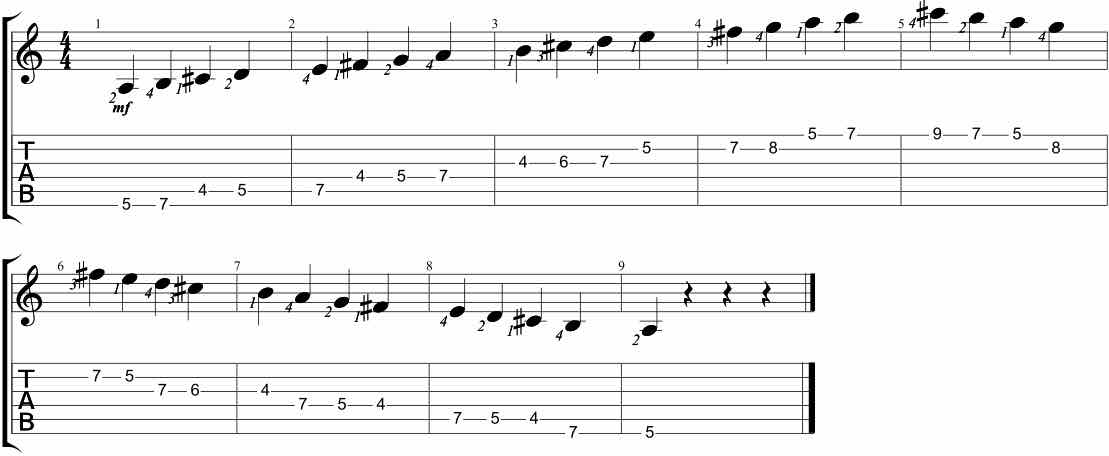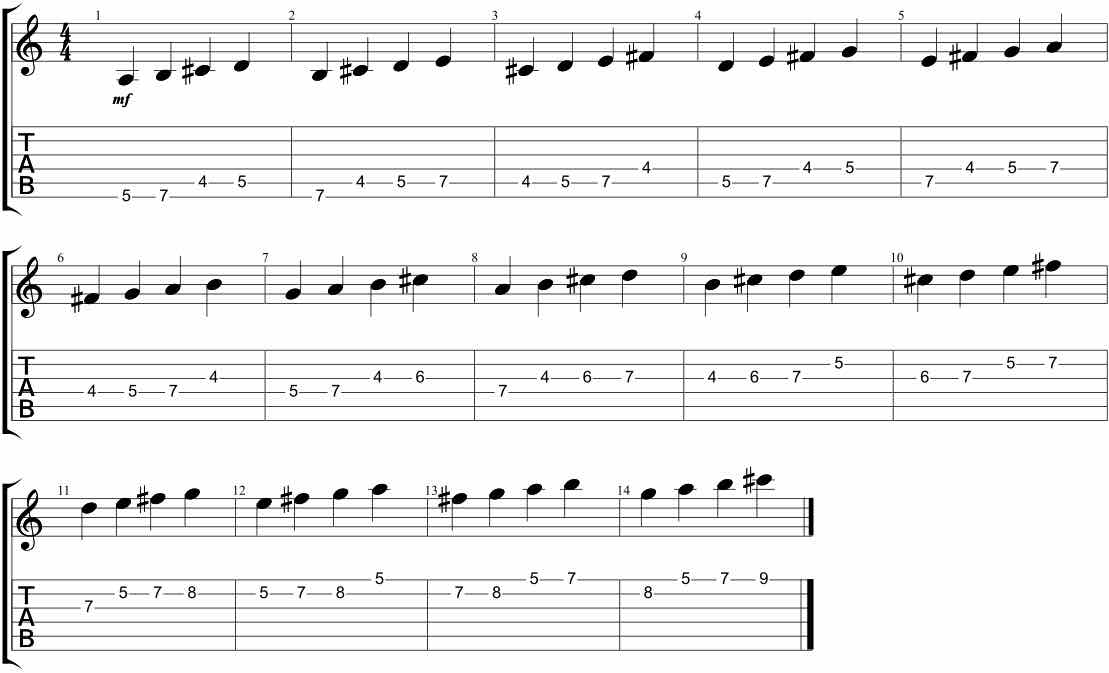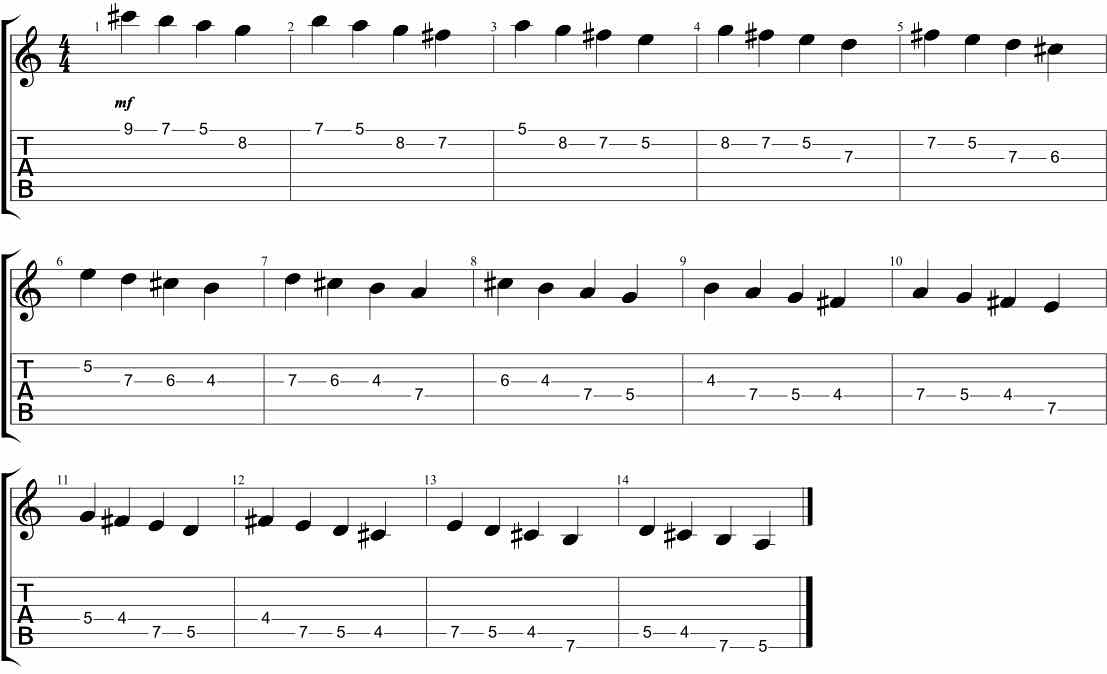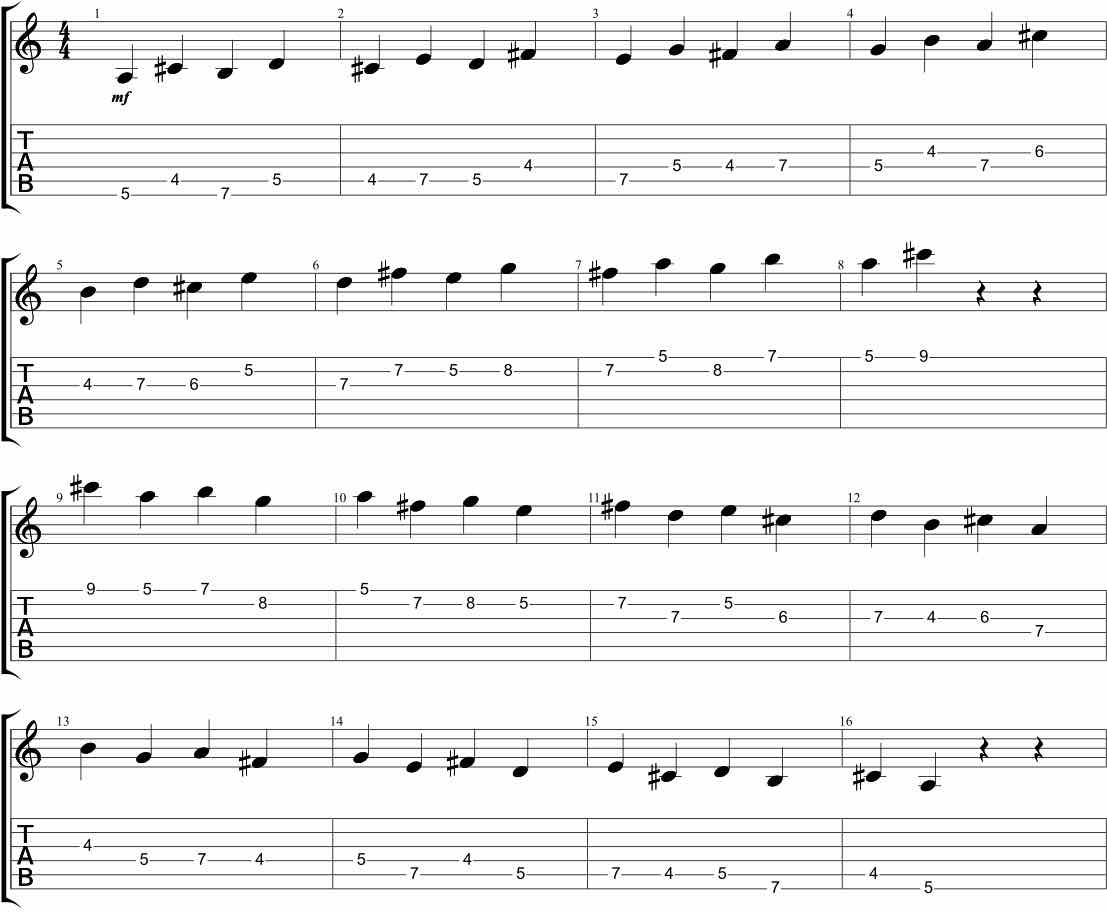May 14, 2019 by Klaus Crow
Bigstock photo

Well, not that there’s anything wrong with the pentatonic scale, on the contrary, the pentatonic / blues scale is the most essential scale for blues music.
But if you want to take it a little further and jazz it up with some nice fresh sounding notes to expand your improvisation possibilities then the mixolydian scale is a great addition.
The mixolydian scale is one of the 7 modes derived from the major scale. It’s the fifth mode and contains a flat seventh compared to the major scale.
If you already know how to play a major scale you only have to lower the 7th degree by a half step and there’s your mixolydian scale.
Major scale = 1 2 3 4 5 6 7
Mixolydian scale = 1 2 3 4 5 6 b7
Because the mixolydian scale contains a major 3rd and flat7 (b7) it’s perfectly fit to play over a dom7 chord. And as you might know, the dom7 chord is the main ingredient for blues music.
Now you know how the mixolydian scale is build up, you want to know how to combine mixolydian and pentatonic into your improvisation.
Let’s compare the two scales:
Minor pentatonic scale = 1 b3 4 5 b7
Mixolydian scale = 1 2 3 4 5 6 b7
You can see that the mixolydian scale contains an extra major second, major third and major sixth which will lead to some interesting flavor when used in combination with the pentatonic scale.
Note that it takes quite a bit of practice to use the two scales and make it sound as a whole and not as if you’re playing one scale and then the other. The trick is to take bits and pieces of the mixolydian scale, create small melodic phrases with just a few notes and sneak it into the pentatonic scale to make it sound natural, coherent and satisfying to the ear.
But before you can do that you first need to practice the mixolydian scale thoroughly.
Scales over chords
While you can play the A pentatonic scale easily over a 1-4-5 blues progression (A7-D7-E7), if you want to play mixolydian you need to change the scale along with the chord. So when you move to a D7 chord you also need to play D mixolydian. Move to an E7 chord you play E mixolydian.
To make this somewhat easier and learn to combine these two scales it’s a good idea to start practicing over an A7 chord vamp (a static one-chord progression).
Practice
Although you can play the mixolydian scale all over the neck (like all scales) let’s focus on the scale shape that fits best with the most used pentatonic scale shape (see first example below).
Let’s get into some effective exercises and tips that will really help you learn the mixolydian scale inside out and get you ready for improvisation.
Enjoy!
MIXOLYDIAN SCALE IN THE KEY OF A
First practice the Mixolydian scale according to the finger position indicated on the note staff next to the notes.
MIXOLYDIAN SCALE SEQUENCE – ASCENDING
This example shows a Mixolydian scale sequence. You play four notes of the scale ascending and then go back to the second note of the scale and play four notes from there ascending, go back to the third note of the scale and play four notes up, go back to the fifth note of the scale play four notes up and so on.
MIXOLYDIAN SCALE SEQUENCE – DESCENDING
Now practice the mixolydian scale sequence descending. Go four notes down from the last note in the scale. Go back to the second last note of the scale and go down four notes, go back to the third last note of the scale and go down four notes and so on.
MIXOLYDIAN IN THIRDS
The mixolydian scale played in 3rds ascending and descending is a good one to really get the scale down in your fingers and to apply to your improvisation. You start from the first note in the scale, skip the second and play the third. Then play the second note in the scale, skip the third and play the fourth. Play the third note in the scale, skip the fourth and play the fifth and so on.
MIXOLYDIAN HARMONIC INTERVALS OF A THIRD
This last example shows mixolydian harmonic intervals of a third which adds some really attractive seasoning.
TIPS FOR LEARNING THE SCALE INSIDE OUT:
– Practice the mixolydian scale according to the finger position indicated on the note staff next to the notes.
– Practice the mixolydian scale with just your index finger.
– Start your scale on random strings, for example on the G-string and finish the scale all the way up the end of the scale.
– Start your scale on the D-string and play all the way up to the end of the scale. Practice this on every string.
– Now start from a random string and play all the way down the to beginning of the scale. Practice this starting on different strings.
– Move and practice the entire scale up a whole step (2 frets), you’re now playing the mixolydian scale in the key of B.
– Don’t memorize frets, but fingering position:
Low E string: middle-pinky
A-string: index-middle-pinky
D-string: index-middle-pinky
G-string: index-ring-pinky
B-string: index-ring pinky
High E-string: index-middle-pinky
– Practice the mixolydian scale in different keys.
– Create a melody of 4 notes including the major 3rd and try to sneak it into your pentatonic improvisation.
– Play a short bit of mixolydian 3rds descending and finish it pentatonic wise.
– Start with pentatonic and slide into a mixolydian phrase ending on the major 6th.
– Make it a habit to add some mixolydian flavor to your pentatonic improvisation to develop and improve your skill until it feels comfortable and natural.
Have fun!
Join the Guitarhabits facebook page to keep up with the latest posts, guitar lesson videos, tips, tricks and other news about Guitarhabits.






Hi Klaus sir,
This mixolydian scales are very helpful in improving my improvisation abilities.The tips you provided are very helpful in practicing these scales.I am going to practice these lessons.I had a difficulty in reading both notation and tabs.Since I’m a beginner these mixolydian scales are new term to me.I really learnt a lot from your blog.You are also a teacher to me and the best.You are my greatest inspiration and motivation for guitar playing.Whenever I feel down I read your articles and get the motivation to practice.I enjoy practicing these scales.I hope that i will improve in practicing these scales.
I have a question
while practicing you had said that there will be improvements and setbacks.
What to do with setbacks?
How to deal with it?
Hi Prasana,
To be honest, there are no real setbacks. They only feel like setbacks. The moment you practice and you feel like you haven’t made any progress because your fingers are stiff and clumsy and everything is going too slow, well that’s just your brain needing to process everything that you are teaching it. And in that moment of frustration your fingers are creating the building blocks for future improvement. Those moments when you feel like you s#ck are the most valuable moments where you are doing all the hard work and that will ultimately lead to progress. If you keep that in mind you can enjoy that moment because you know you are really making progress there.
Best regards,
Klaus Crow
hi Klaus, thank you for your work and the great explanations and excercises.
But I have a little question to this exercise
“Don’t memorize frets, but fingering position:
Low E string: middle-pinky
A-string: index-middle-pinky
D-string: index-middle-pinky
G-string: index-ring-pinky
B-string: index-ring pinky
High E-string: index-middle-pinky”
Could it be “middle-pinky” for the Highe E string pattern?
All the best and thanks, Rainer
Uhhhh, I’ve just realized my mistake :)